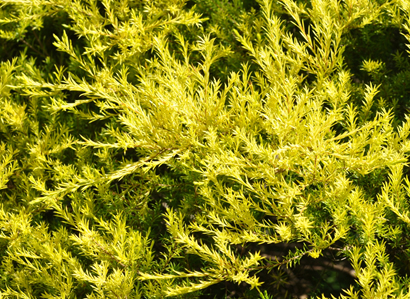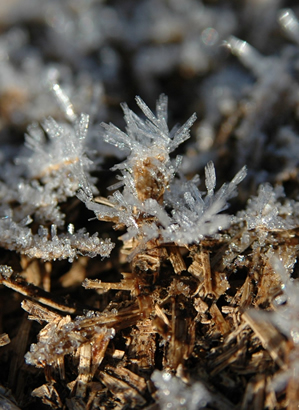Contributing gardening editor Marianne Alexander answers common questions about protecting plants against frost
Should I trim the damaged leaves off plants that have been hit by frost?
An unequivocal no. Wait until spring after all danger of another freeze is past. Though unsightly, these leaves and stems help protect your plants from further frost damage.
YOU’LL ALSO LOVE: THE ULTIMATE WINTER GARDENING GUIDE
I love fuchsias and pelargoniums, but they never survive our harsh winters. Where should I plant tender plants like these to protect them from frost?
Try growing them near a north-facing wall; at night this will release any heat that’s been absorbed during the day. Plant shade-loving fuchsias under a deciduous tree which will let in the sun during winter.

Confetti Bush
Here are some other tips for protecting your plants against frost:
- In really cold areas, lift your plants and overwinter them in pots in a warm frost-free place. Keep the soil moist.
- In less severe frost areas, leave them in the ground. Add mulch, keeping the stems clear. Drape fleece over four stakes and cover the plant, anchoring the fleece to the ground. Remove this during warm, sunny spells.
READ MORE: Different types of soil for your garden
The flowers of the camellias and magnolias on the east side of my house are damaged by frost every year. What can I do to prevent this happening?
Frosted blossom and young shoots which are exposed to the early morning sun can be damaged if they thaw too fast. Hose them down lightly before the sun reaches them. (Remember to store your hose in a frost-free area so it isn’t frozen when you need it.)
Plant a few trees to retain the warmer air and provide some cover.
If your camellias and magnolias are growing in containers, move them to a sheltered position for the winter.

Melaleuca bracteata ‘Johannesburg Gold’
I live in a very cold area. Could you recommend some frost-proof plants that would be a good bet for my garden?
Ann Fletcher from Elliot in the Eastern Cape, which has severe frost in winter, finds the following plants work well in her garden: Abelias, Elaeagnus pungens ‘Variegata’, Pittosporum tobira, P. tenuifolium, rosemary, confetti bushes, Melaleuca bracteata ‘Johannesburg Gold’ and holly.

Holly
What’s the difference between black and regular frost?
White or regular frost occurs when there’s little cloud cover or wind. In this case, the soil cools rapidly, the cold air sinks, and when the temperature drops below freezing (0°C), the water vapour or dew on the leaves freezes forming white crystals which rupture cells damaging the plants.
Black or hoar frost happens when the air is too dry for dew to form and be converted into ice crystals. It leaves plants blackened.
My lollipop topiaries have been damaged by frost. What should I do to prevent this happening again?

Abelia
There are a number of things you can do:
- Place a couple of two-litre cool drink bottles filled with water at the base of your trees. At night they’ll release the heat they’ve absorbed during the day.
- Make sure the soil in your container is moist as damp soil stores more heat during the day than loose, dry soil. (Only water your plant in the mornings.)
- Drape horticultural fleece over the crown of your plant to trap the heat that is given off by the ground (see left).
- Twirl outdoor Christmas lights around the tree, or place a low-wattage, waterproof light at the base; the heat given off will rise up into the canopy. (Note: The wattage of strings of LED lights are too low to be effective here.)
- How does mulch help guard against frost damage?
Frost protection is all about preventing heat loss by covering your plants or replacing radiant heat loss by trapping any heat given off by the ground or surrounding structures like walls. Mulch retains heat and keeps the plant warmer.
KEEP READING: How to keep your indoor plants alive during winter

